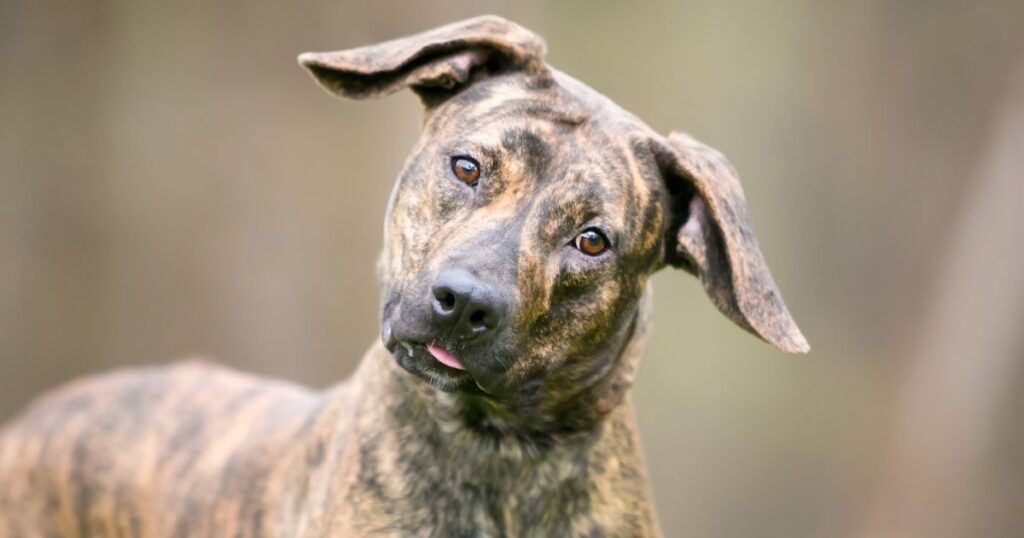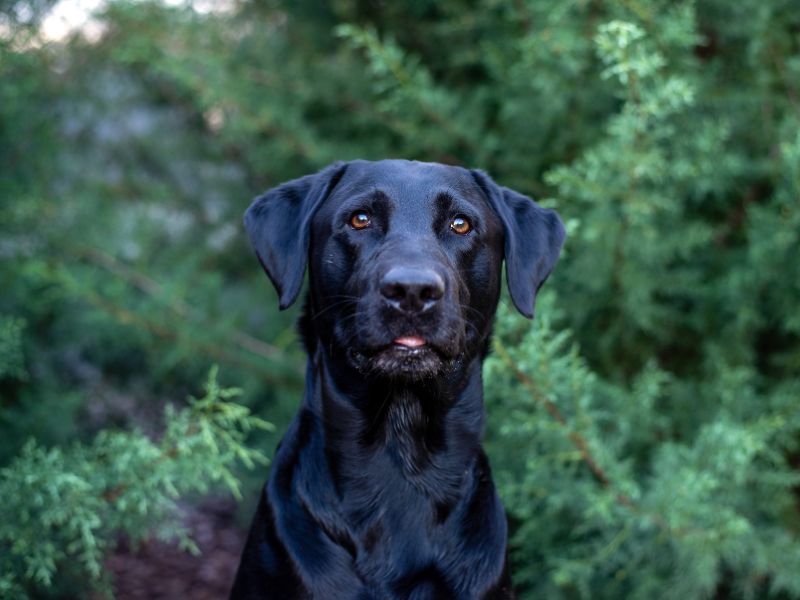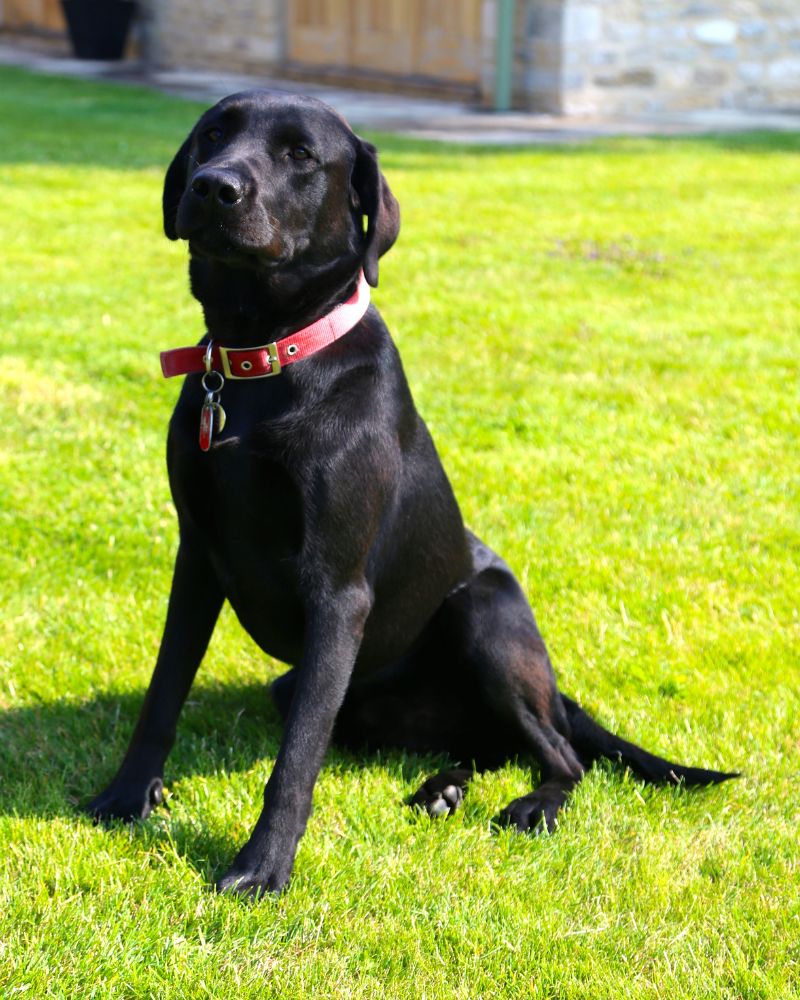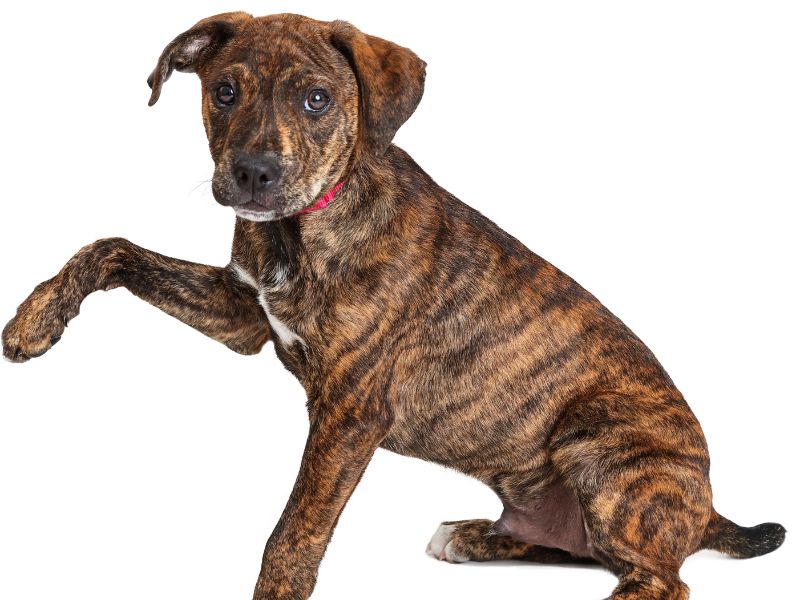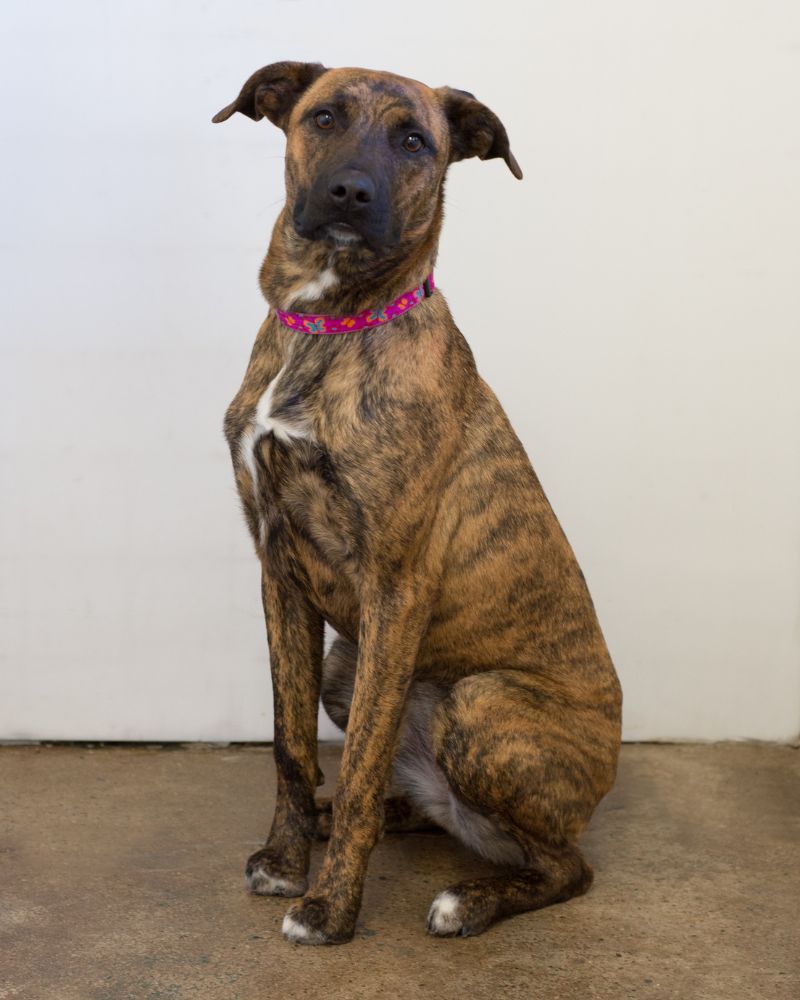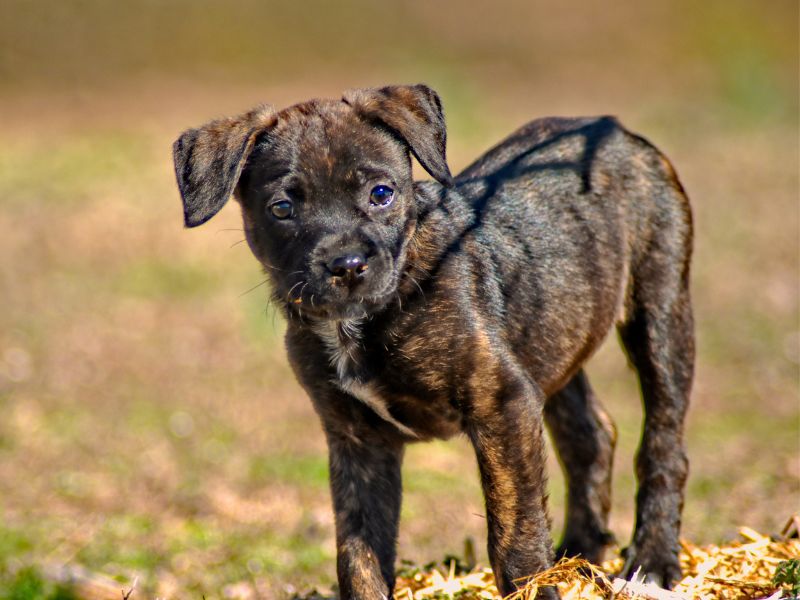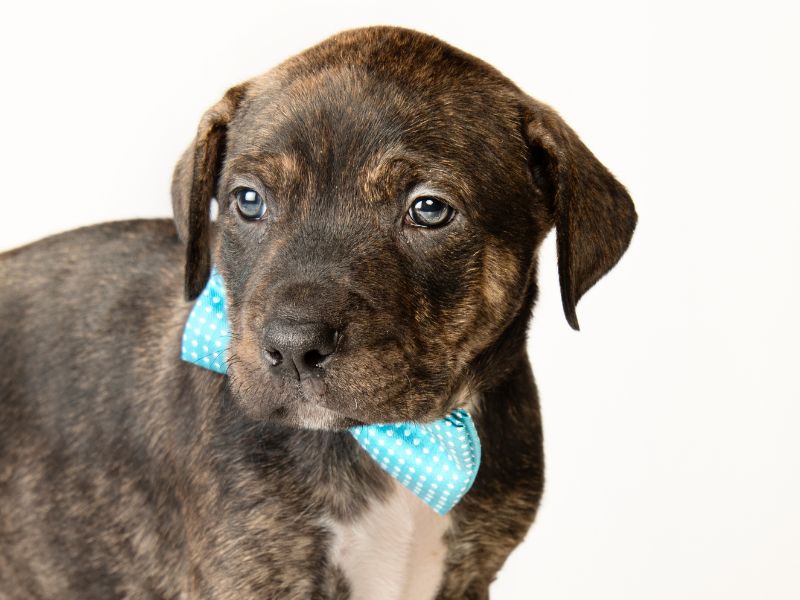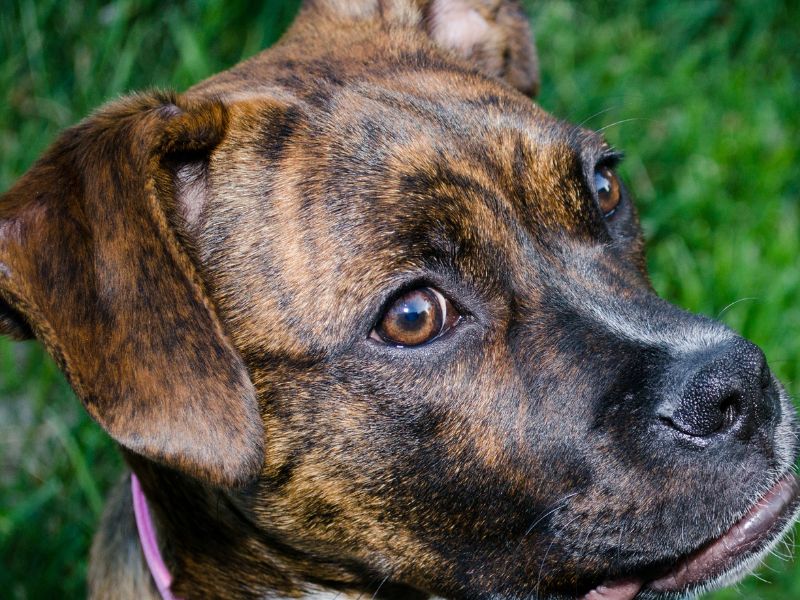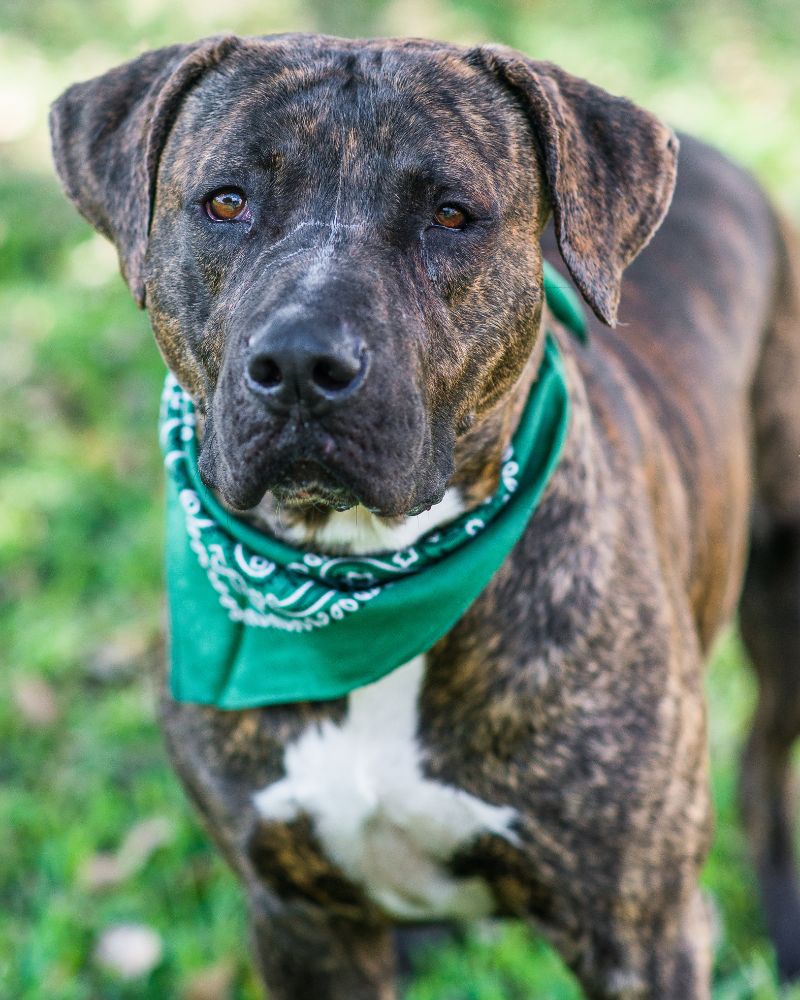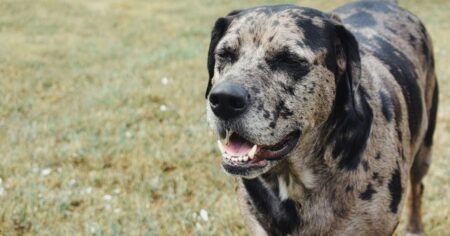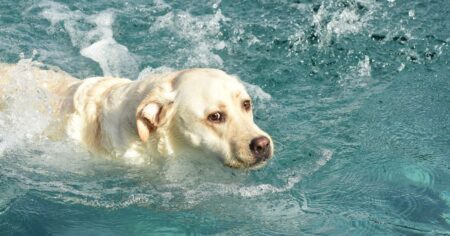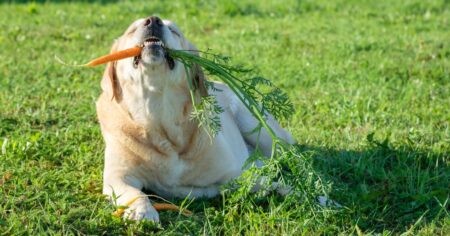Brindle Labs are a unique and rare variation of the beloved Labrador Retriever. Characterized by their unusual coat pattern of dark flecks or stripes over a brown base, brindle coloring on Labs is classed as a disqualification in the show ring. However, many owners find the brindle coat to be quite desirable and unique-looking, making them a popular choice for those looking for a one-of-a-kind pet.
While some brindle Labs are purebred, others may result from mixed breeding. This pattern can also be known as tiger stripes. The odds of finding a Lab that’s completely brindle are slim as the brindle coloring in Labs is usually on certain body parts, like a Chocolate Lab with brindle paws. Despite this, brindle Labs are still highly sought after by those looking for a loyal, playful, and affectionate companion.
About The Labrador Retriever
The Labrador Retriever, commonly known as the Lab, is a medium to large-sized breed of dog. They are one of the most popular dog breeds in the world and are known for their friendly and outgoing nature. Labs are often used as therapy dogs, search and rescue dogs, and as assistance dogs for people with disabilities.
Labs are known for their intelligence, loyalty, and trainability. They are easy to train and are often used as guide dogs for the blind. Labs are also great with children and make excellent family pets.
Labradors come in three colors: black, chocolate, and yellow. However, some Labs have a unique brindle coat pattern with dark flecks or stripes over a brown base. This pattern can also be known as tiger stripes.
Labs are energetic dogs and require regular exercise and mental stimulation. They are excellent swimmers and love to retrieve, making them great companions for outdoor activities such as hiking and swimming. Labs have a lifespan of 10-12 years and require regular grooming to maintain their coat and overall health.
In summary, the Labrador Retriever is a friendly, intelligent, and loyal breed of dog that makes an excellent family pet. With their unique brindle coat pattern and love for outdoor activities, they are a popular choice for dog lovers around the world.
Standard Labrador Colors
Labrador Retrievers are known for their friendly and outgoing personalities, as well as their intelligence and trainability. They are also known for their distinctive coat colors. According to the American Kennel Club (AKC), the three standard colors for Labradors are yellow, black, and chocolate.
Yellow labs can range in shade from a light cream color to a deep golden hue. Black labs have a solid black coat, while chocolate labs have a rich, brown coat. It’s important to note that any other colors or patterns, such as brindle, are not considered standard for the breed.
The AKC breed standard also allows for small white markings on the chest, but any other white markings are considered a fault. It’s worth noting that while these are the standard colors, there are many other variations that can occur due to genetics or breeding. For example, some labs may have a recessive gene that causes their coat to be silver or charcoal in color.
Overall, while the standard colors for Labradors are yellow, black, and chocolate, there are many other variations and patterns that can occur. However, it’s important to remember that these colors and patterns are not considered standard for the breed.
What Is Brindle Coloring?
Brindle coloring is a unique coat pattern that can be found in some Labrador Retrievers. It is a pattern of dark flecks or stripes over a brown base, which can give the dog a tiger-like appearance. The brindle pattern can occur in purebred Labs or as a result of mixed breeding.
Brindle coloring can come in different shades and variations. Sometimes it can be described as orange or tanned colored streaks with black markings on top. Other times, it can appear as nearly black or dark brown stripes on a lighter brown base. Some Labs may have a reverse brindle pattern, where the stripes are more prominent on a darker base coat.
It’s important to note that brindle coloring is considered a mismark by the American Kennel Club (AKC) and is not recognized as a standard color for Labradors. This means that brindle Labs cannot participate in conformation shows. However, this doesn’t affect their ability to make great pets.
Overall, brindle coloring is a unique and interesting pattern that can make a Labrador Retriever stand out from the crowd.
Brindle Lab Genetics
The brindle coat pattern is not a typical color variant in Labradors, but a rare and unique sight. Brindle Labs can occur as a result of mixed breeding or can be possible in purebred Labs. The genetics behind the brindle coat pattern are fascinating. It is caused by the interaction of two genes: the K locus and the E locus.
The K locus determines whether a dog has a solid coat color or a brindle pattern. The dominant “K” allele produces a solid coat color, while the recessive “kbr” allele produces a brindle pattern. A dog must inherit two copies of the “kbr” allele to have a brindle coat pattern.
The E locus, on the other hand, determines whether the brindle pattern is expressed or not. The dominant “E” allele allows the brindle pattern to be expressed, while the recessive “e” allele masks the brindle pattern. A dog must inherit at least one copy of the dominant “E” allele to express the brindle pattern.
Therefore, a dog with a brindle coat pattern must inherit two copies of the recessive “kbr” allele and at least one copy of the dominant “E” allele. It is important to note that the brindle coat pattern does not affect a Lab’s behavior or health.
Overall, the genetics behind the brindle coat pattern in Labradors is complex and fascinating. By understanding the interaction of the K locus and the E locus, breeders can predict the likelihood of producing brindle Labs in their litters.
Can Brindle Labs Be Shown?
Brindle Labs can be shown in dog shows, but they are not considered a standard color by the American Kennel Club (AKC). According to the AKC, the only acceptable colors for Labrador Retrievers are black, yellow, and chocolate. However, a small white marking on the chest is also permitted.
If someone wants to show their Brindle Lab, they can participate in events that are not sanctioned by the AKC, such as those put on by the United Kennel Club (UKC). The UKC recognizes Brindle Labs as a separate color and allows them to compete in conformation shows.
It is important to note that while Brindle Labs can be shown, their unique coloration may not always be favored by judges. Judges are looking for dogs that meet the breed standard, which includes factors such as size, shape, and temperament. A Brindle Lab that meets these standards may still be successful in the show ring, but it ultimately depends on the judge’s preferences.
In summary, Brindle Labs can be shown in certain events, but they are not considered a standard color by the AKC. If someone wants to show their Brindle Lab, they can participate in events put on by organizations that recognize the color, such as the UKC. However, success in the show ring ultimately depends on the individual dog’s adherence to the breed standard and the judge’s preferences.
Brindle Lab Health
Brindle Labs are generally healthy dogs, but they can be prone to certain health issues. It is important to be aware of these potential health problems, so you can take steps to prevent them or catch them early on. Here are some of the common health issues that Brindle Labs may face:
- Hip Dysplasia: Brindle Labs, like all Labradors, are prone to hip dysplasia, a condition where the hip joint does not develop properly. This can cause pain, lameness, and arthritis. Regular exercise and a healthy diet can help prevent hip dysplasia, but it is also important to have your Brindle Lab screened for this condition.
- Obesity: Brindle Labs love to eat, and they can easily become overweight if they are not given enough exercise and a balanced diet. Obesity can lead to a variety of health problems, including joint pain, heart disease, and diabetes. To keep your Brindle Lab healthy, make sure to feed them a high-quality diet and give them plenty of exercise.
- Ear Infections: Brindle Labs have floppy ears, which can trap moisture and bacteria, leading to ear infections. To prevent ear infections, it is important to keep your Brindle Lab’s ears clean and dry. You can also talk to your veterinarian about ear cleaning solutions and other preventative measures.
- Eye Problems: Brindle Labs may be prone to certain eye problems, such as cataracts and progressive retinal atrophy. Regular eye exams can help detect these conditions early on, so they can be treated before they cause serious vision problems.
Overall, with proper care and attention, Brindle Labs can live long, healthy lives. Regular veterinary check-ups, a balanced diet, and plenty of exercise can go a long way in keeping your Brindle Lab happy and healthy.
Brindle Lab Mix
A Brindle Lab mix is a crossbreed between a Brindle Lab and another breed. These mixes can inherit a variety of traits from both parent breeds, resulting in a unique combination of characteristics. The Brindle Lab’s temperament and physical features are highly sought after by many dog lovers, and when combined with another breed, the result can be a wonderful companion.
One example of a Brindle Lab mix is the Brindle Labradoodle, which is a cross between a Brindle Lab and a Poodle. This mix is known for its hypoallergenic coat, intelligence, and friendly temperament. Another popular Brindle Lab mix is the Brindle Lab Pitbull, which is a cross between a Brindle Lab and a Pitbull. This mix is known for its loyalty, protectiveness, and athleticism.
When considering a Brindle Lab mix, it is important to research both parent breeds to get an idea of what traits the mix may inherit. It is also important to choose a reputable breeder who can provide health clearances for both parent breeds. With proper care and training, a Brindle Lab mix can make a wonderful addition to any family.
Brindle Lab Puppies
Brindle Lab puppies are a unique and rare variation of the Labrador Retriever breed. They have a distinctive coat pattern with dark flecks or stripes over a brown base, which can also be known as tiger stripes. This pattern is possible in purebred Labs, or can occur as a result of mixed breeding.
Why Charge So Much?
Brindle Lab puppies can be more expensive than other Lab puppies due to their rarity and unique coat pattern. Breeders may also charge more for their puppies if they come from champion bloodlines or have undergone extensive health testing. However, it is important to research and choose a reputable breeder who prioritizes the health and well-being of their puppies over profit.
When looking to adopt a Brindle Lab puppy, it is important to consider the cost of ongoing care, including food, veterinary bills, and training. Labs are active and intelligent dogs that require plenty of exercise and mental stimulation to stay healthy and happy. Potential owners should be prepared to provide a loving and dedicated home for their new furry friend.
Overall, Brindle Lab puppies are a unique and beautiful addition to any family. With proper care and training, they can make loyal and loving companions for many years to come.
Brindle Lab Summary
Brindle Labs are a unique variation of the Labrador Retriever breed with a coat pattern of dark flecks or stripes over a brown base. This pattern can also be known as tiger stripes. According to The Labrador Site, brindling is a coat pattern that can occur in purebred Labs or as a result of mixed breeding.
The odds of finding a Lab that is completely brindle are slim, as the brindle coloring in Labs is usually on certain body parts, such as the muzzle, chest, and legs. Brindle Labs have a strong body and muscular build shape, making them ideal for activities such as hunting, retrieving, and swimming.
Despite their unique appearance, brindle Labs have the same friendly, loyal, and affectionate temperament as other Labrador Retrievers. They are known for being great family pets and are often used as therapy dogs due to their calm and gentle nature. Overall, brindle Labs are a rare and fascinating variation of the beloved Labrador Retriever breed.
Readers Also Liked
If you’re interested in the brindle Lab, you might also enjoy learning about other unique coat patterns in dogs. The merle coat pattern, for example, is characterized by patches of color on a lighter base coat. Some popular breeds with merle coats include the Australian Shepherd and the Catahoula Leopard Dog.
Another interesting coat pattern is the harlequin pattern, which is characterized by irregular patches of black and white on a white base coat. This pattern is most commonly seen in Great Danes and is highly sought after by breed enthusiasts.
If you’re looking for a dog with a unique coat pattern that’s also hypoallergenic, you might consider the Labradoodle. This crossbreed between a Labrador Retriever and a Poodle can come in a variety of coat colors and patterns, including brindle.
Whether you’re interested in brindle Labs or other unique coat patterns, there’s no shortage of fascinating information to discover about the world of dogs.
References And Resources
Here are some resources for further reading on Brindle Labs:
- The Labrador Site has an informative article on everything you need to know about this unique pattern. It covers topics such as what brindle is, its history, and whether brindle Labs can be shown.
- Labrador Secrets provides a comprehensive guide to brindle Labs, including their temperament, exercise needs, and grooming requirements.
- BarkVA offers an 11 key things you need to know about Brindle Labradors, including their rarity, coat colors, and personality traits.
- Labrador In Black has an ultimate guide to brindle lab puppies, which covers everything from their physical characteristics to their personality traits.
- PlayBarkRun provides a quick guide to brindle Labradors, including what causes brindle and why they are not considered show dogs.
These resources can help you learn more about brindle Labs and whether they are the right breed for you.

